One Retailer Has Promised to Jump Starting Pay As High As $24 an Hour. Who’s Next?
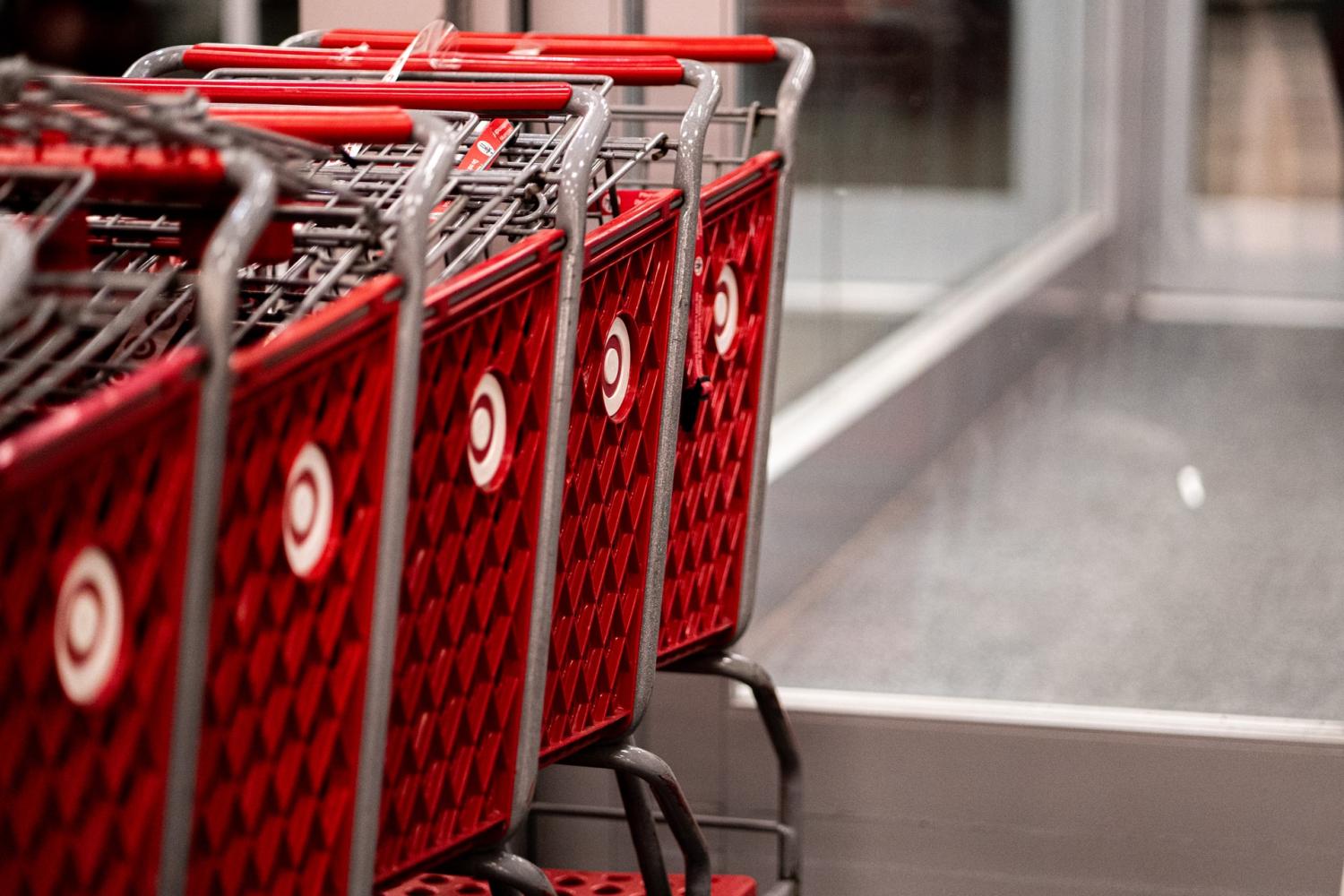
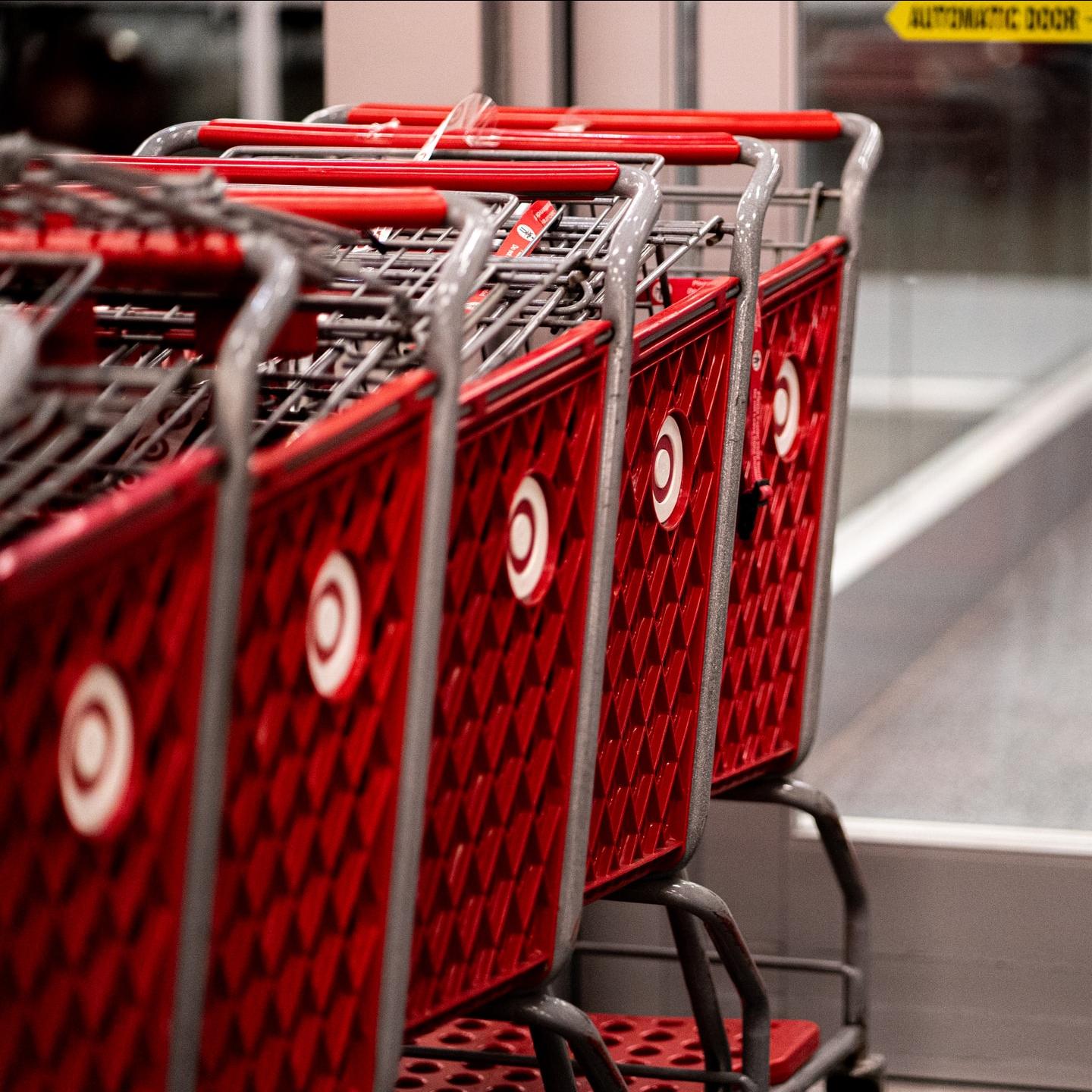
Target recently announced it will raise its starting wage for some workers to as much as $24 an hour. The exact starting wage will depend on the job and the local market, with market-level wages set by the retailer based on industry benchmarking and data on local wages. As this analysis is still underway, the Minneapolis-based corporation did not reveal which areas will be getting the highest starting wage.
Target pushes the envelope on hourly pay
The new approach will apply to hourly employees working in Target stores, supply chain facilities and headquarters locations, according to a press release on the retail giant’s news website.
“The market has changed,” said Target CEO Brian Cornell in an interview with The Associated Press. “We want to continue to have an industry-leading position.”
Target, which more than 350,000 workers and more than 1,900 U.S. stores, said in the press release the hike in some starting wages is part of its plan to spend an additional $300 million on its workforce. That investment also includes expanding access to healthcare benefits for hourly workers, beginning in April.
In its announcement, the retailer said the “expanded offerings help advance key portions of the company’s Target Forward strategy that aim to create equity and opportunity for Target’s team, partners and communities.”
Not only higher pay, but more employee benefits for some
Under the plan, Target's hourly employees who work a minimum average of 25 hours a week will be eligible to enroll in a company medical plan, instead of the previous requirement of 30 hours per week. The retailer is shortening the waiting period for eligible hourly team members to enroll in a Target medical plan. Depending on their position, employees will be able to get comprehensive health care benefits three to nine months sooner. Employees will also get faster access to 401(k) plans.
“We want all team members to be better off for working at Target, and years of investments in our culture of care, meaningful pay, expanded health care benefits and opportunities for growth have been essential to helping our team members build rewarding careers,” said Melissa Kremer, Target’s chief human resources officer.
Five years ago, Target set a new marker for the retail industry back when it announced it would increase hourly wages to $15 by 2020. But U.S. labor-market dynamics have shifted during the pandemic, with many employers facing severe worker shortages. Many of Target’s rivals are now paying a minimum of $15 per hour or more.
During the pandemic, retailers like Best Buy followed suit, with some surpassing Target. Costco raised its minimum hourly wages for workers from $16 to $17 last fall. Amazon’s starting wage is $15 per hour, and its nationwide average starting wage for jobs in transportation and fulfillment is $18 an hour.
Walmart lags behind these retailers. Last fall, it boosted its minimum wage to $12, from the $11 hourly base it established in 2018. Walmart also raised the hourly wages for more than 565,000 store workers by at least a dollar.
While many retailers struggle to find workers, Target has claimed its employee turnover rate is now lower than before the pandemic. The retailer also said that it was able to exceed its goal of hiring 100,000 seasonal workers at its stores and 30,000 in its supply chain network across the country throughout the 2021 holiday season.
As the Associated Press has reported, The ongoing scramble for workers within the retail and other sectors has led to significant increases in hourly wages, giving many lower-income and part-time employees a boost in wages not seen in years. Data from the Federal Reserve Bank of Atlanta concluded that pay among the poorest 25 percent of workers surged 5.8 percent in January when compared to one year ago.
Better pay, however, doesn't necessarily mean that hourly workers are faring well. As some economists have suggested, the pandemic has widened inequality between the haves and the have-nots: Inequality.org, for example, has concluded that by and large, the growth of jobs and pay has been largely uneven.
Wage increases have been a mixed bag for retail employees
In January, average pay for retail workers, excluding managers, jumped 7.1 percent from a year earlier to $19.24 an hour. That’s faster than pre-pandemic gains. In January 2020, pay for retail workers rose 4.2 percent from the previous year. In January 2017, it rose just 1.7 percent from the previous year.
That's not only good news for workers, but for their employers as well. A July 2020 report from Just Capital suggested that paying workers a living wage can result in less absenteeism, lower turnover, and more capable and motivated workers.
Unfortunately, inflation has eaten away at most of those increases, with consumer prices rising more than they have in four decades. Yet that spike in inflation followed a year of muted price gains. According to the Federal Reserve Bank of Dallas, pay increases have been strong enough to offset inflation, leaving workers, on average, with slightly higher inflation-adjusted pay.
The labor shortage continues to take its toll on workers. According to a recent report from the Shift Project, a joint venture by Harvard University and the University of California, San Francisco, “Alongside the health risks, uncertainty and stress of working during a pandemic, many service-sector workers continue to contend with chronically unpredictable and unstable work schedules.”
Image credit: Abhinav Bhardwaj via Unsplash
Are Impossible’s New Plant-Based Nuggets Meant for Children or Their Millennial Parents?
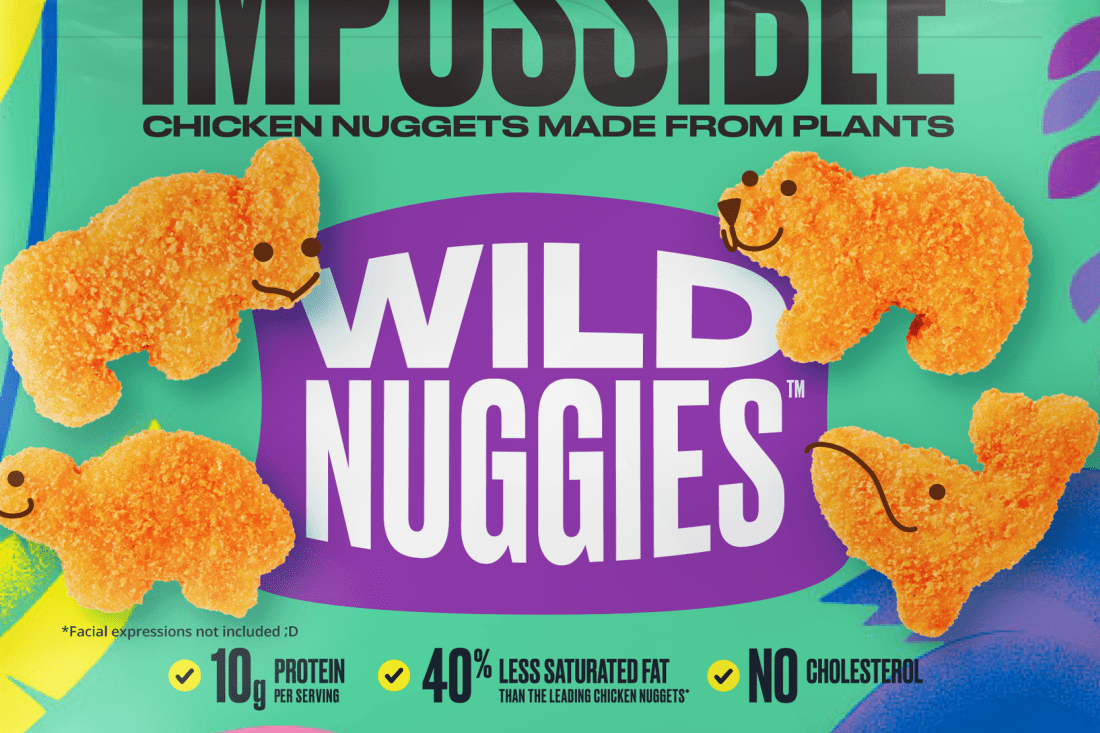
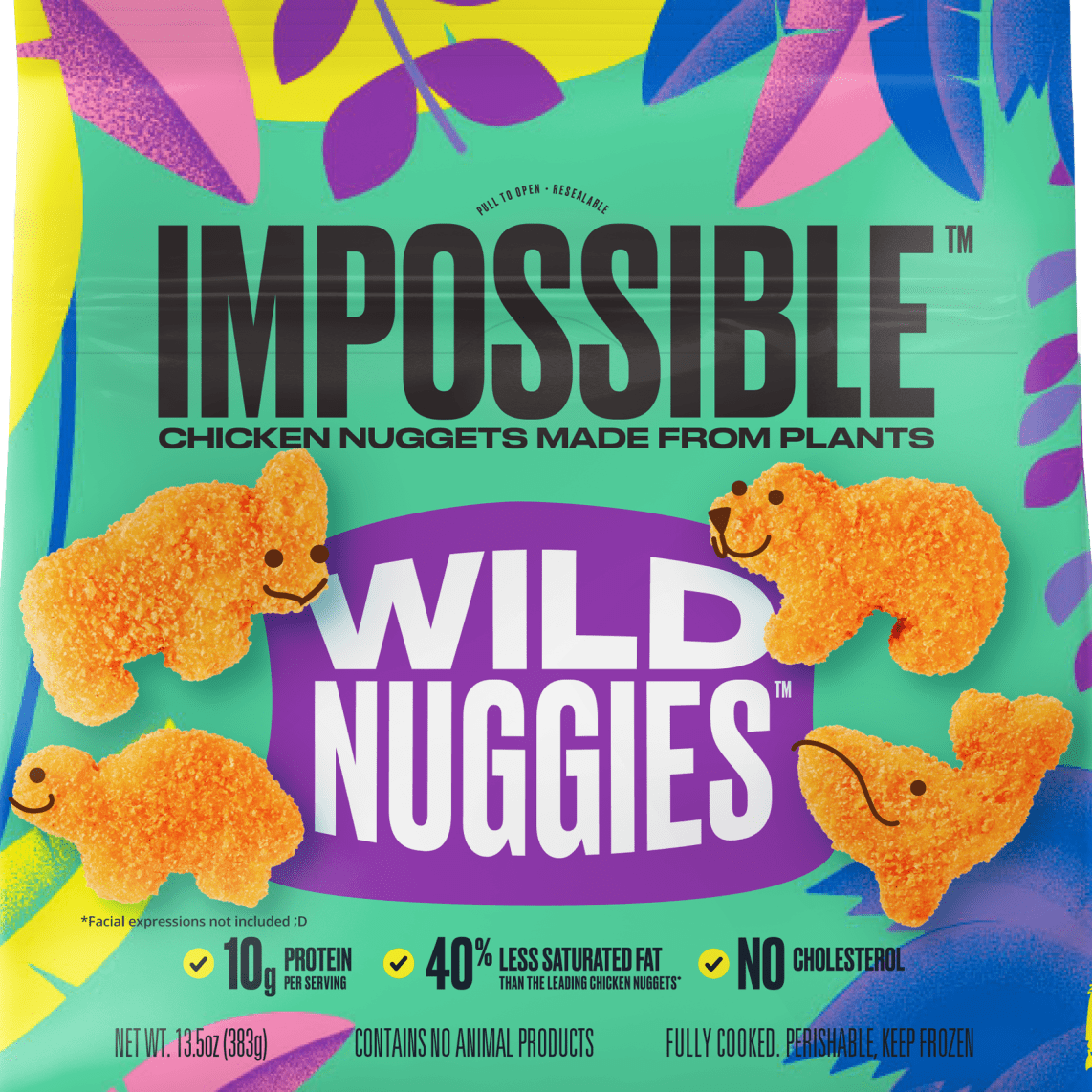
Ask almost any kid, and they will tell you certain shapes can make a food go from good to great. Just look at chocolate Easter bunnies, Goldfish crackers, or anything Mickey Mouse shaped at Disneyland. Now, add plant-based goodies to that menu.
Impossible Foods, one of the biggest names in plant-based proteins, has a new product meant to use fun food shapes to teach children about wildlife conservation. Wild Nuggies are meatless nuggets shaped like four different endangered species: Black rhinoceroses, Galapagos tortoises, polar bears and right whales.
Impossible Foods first introduced it’s “chicken-less” nuggets last year with an initial rollout across restaurants like those owned by celebrity chefs David Chang and Marcus Samuelsson. By the end of 2021, grocery retailers around the country were carrying the nuggets for consumers to enjoy at home.
The Wild Nuggies are made of the same ingredients as their traditional-shaped counterparts, including soy protein, sunflower oil, and food starch. Impossible Foods says that its nuggets “use 49 percent less land, 44 percent less water and generate 36 percent less greenhouse gas emissions than animal-based nuggets.”
Impossible’s Wild Nuggies are not to be confused with another animal-shaped, plant-based nuggets – Simulate brand’s Dino Nuggs. Those are shaped like creatures that are extinct. Impossible’s nuggets, however, are shaped like animals in danger of becoming extinct if we don’t take serious action.
“Our goal is to spark a conversation at the dinner table about how our food choices impact our planet, and how eating plant-based is the best way for kids to help combat the urgent threat of climate change and nature loss,” said Laura Kliman, Impossible Foods’ director of new product development, in a press release about the Wild Nuggies launch.
While I appreciate the intention, there is some disconnect - there's some information about the animals on the packaging, but one must scan a QR code to learn more - and that code is hidden at the bottom of a side panel - a task with which many parents may not to bother as they scramble to prepare a meal.
A clearer connection: Annie’s macaroni and cheese
Like Impossible Foods, Annie’s (a General Mills brand) also uses fun shapes to draw awareness to environmental issues, especially with its macaroni and cheese products.
But Annie’s has done a much better job with its messaging as there is a clear connection between many of its “quirky” products and its corporate responsibility initiatives.
In 2018, Annie’s used limited-edition packaging to spread the word about regenerative farming practices. The macaroni and cheese boxes listed the farmers’ names, location and specific crops used to make the product. The boxes also included information about sustainable farming.
Since then, Annie’s has offered a range of fun pasta products directly tied to sustainable agricultural initiatives, such as Mac and Bees, Pollinator Pals, and Farm Friends.
Side note: If you think that macaroni and cheese varieties don’t have lasting impact on kids, consider this highly unscientific poll of my Facebook friends. I asked people to share their favorite mac-and-cheese shapes, and a heated debate quickly followed: “Spongebob! No, Rugrats! No, stick with classic elbows or shells!”
Who’s the real target market for these plant-based products?
So are products like wildlife-shaped meatless nuggets or farm tractor-shaped pasta actually effective at bringing about environmental awareness?
Let’s be honest: The real audience for these products is most likely adults with a desire to relive their childhoods in a healthier, more sustainable way. After all, my fellow millennials and I grew up in the glory days of attention-grabbing food. We had purple ketchup, Ghostbuster juice boxes, and nearly a dozen breakfast cereals that were really just big boxes of teeny-tiny baked goods.
Today, many of us are parents and buying groceries for our families while atoning for decades of less-than-ideal food choices. (Do you know how many chicken nuggets we as a generation collectively consumed in the quest for all of the McDonald’s Happy Meal Teeny Beanie Babies? Trust me, we could all use some plant-based alternatives now that we are older and watching our cholesterol.)
But if we have the choice between buying traditional plant-based nuggets or ones in the shape of a rhino? We are definitely going to pick the rhino.
Image credit: Impossible Foods
Biodiversity Financing Promotes the Cooperation Needed to Stop Extinctions


Los Nevados, just outside of Tolima, Colombia
A number of NGOs have banded together to ask the planet’s most developed nations to ante up some much-needed funding for the protection of biodiversity in still-developing parts of the world. This request, to the tune of $60 billion per year, represents a dramatic shift towards recognizing the responsibility that these countries have as large-scale consumers while providing a promising framework to stop the sixth mass extinction through cooperative financing.
The Nature Conservancy, the Rainforest Trust and the World Resources Institute are just a few among the groups calling on Canada, the U.S., U.K., the E.U. and Japan to make a financial pledge ahead of the Convention on Biological Diversity taking place in Kunming, China this April — and with good reason. The environmental costs of international trade have long been borne by those producing the goods, not those consuming them. As such, the true cost to the environment has not been reflected in the prices that consumers pay and, in essence, these costs have been passed back to the same people who rely on these ecosystems for survival.
According to Manfred Lenzen, a researcher focusing on sustainability at the University of Sydney, international trade accounts for approximately thirty percent of species loss. He explained to Reuters that by relying on raw materials and cheap labor in developing nations, richer countries have been able to shield their own environments from the repercussions of production without incurring any responsibility for ecosystem degradation or biodiversity loss abroad.
This would be bad enough if all ecosystems were created equal. Unfortunately, those at the most risk are also the most diverse, which makes it all the more imperative to act. As Dr. Bruno Oberle of the International Union for the Conservation of Nature, put it for edie, “Providing local and indigenous communities with the necessary means to conserve nature is not only a moral obligation, but also a sound investment that will generate high returns for all of us.”
At the present rate of human activity, our planet is expected to lose between 30 and 50 percent of all species by the middle of this century. Some scientists warn that the sixth mass extinction is already in progress based on the rapid disappearance of invertebrates. This is bad news all around but especially for agriculture, which could expect to lose $217 billion per year if pollinators go extinct. (Not to mention the dire repercussions for the global food system itself.) It’s not just extinction either. Scientists have found that close to half of all land mammals have only 20 percent of their range left over the previous century.
According to the World Economic Forum, $44 trillion worth of the global economy (about half) is at least moderately reliant on the natural world. For that reason alone, it behooves the most developed nations to take this entreaty seriously. After all, the requested $60 billion represents a fraction of the potential cost to the economy and humanity if biodiversity is not fully financed.
There is hope, however. The United Nations still considers it possible to turn things around with an $8 trillion investment by 2050. That’s a huge increase from the current $10 billion that it estimates is allocated each year. Of course, doing away with the $1.8 trillion in subsidies that support environmentally destructive industries will go a long way towards achieving this goal.
Many governments made substantial commitments at the first half of the Convention on Biological Diversity, which took place in Kunming during October 2020. China has promised $230 billion towards a Kunming Fund for biodiversity projects at home and abroad. Japan will dedicate $17 billion to domestic biodiversity projects. While the E.U. has agreed to double its financing for biodiversity abroad.
It remains to be seen whether the nations in question will agree to the requested $60 billion in funding. Still, cooperation is imperative to stopping species loss and protecting biodiversity. By committing to the requested funds, the richest nations can demonstrate to poorer ones that they are willing and able to cooperate towards a better future.
Cooperation between developed and developing nations is imperative if the sixth mass extinction is going to be stopped. So is financing. This request for $60 billion represents a shift in understanding that financing should come from those who consume, not just those who produce. By paying their fair share while empowering the people who live in vulnerable ecosystems to protect biodiversity without having to choose between economics and survival, developed nations can ensure the sustainability and profitability of our planet.
Image credit: Leon Kaye
The Increased Demand for Lithium Due to EVs Now Drives Friendlier Methods for Extracting It


It seems safe to say the future of the automobile is electric. Though today the internal combustion engine still dominates, more and more automakers are pledging all-electric vehicle line-ups in the near future. Each year, consumers have a growing choice of electric vehicles (EVs) to suit their needs, and as gas prices soar, the case to go electric only grows. As both supply and demand for EVs increases, so too will demand for the batteries comprised of lithium that power them.
And with the growth in demand for batteries, so too will come growth in demand for lithium itself. By 2025, around 75 percent of all lithium produced is expected to be used in vehicle batteries. And by 2030, global demand for this element is projected to exceed two million metric tons, a figure that represents a doubling of the demand projected for 2025.
Lithium, a soft silvery-white metal, is not a particularly scarce resource since it’s found quite broadly deposited around the world. But where lithium is found, it’s bound up with salts and minerals, and often not highly concentrated, so extracting it in its pure form requires a lot of processing.
South American countries, notably Bolivia, Chile and Argentina, have some of the worlds’ largest deposits while on other continents, China and Australia are also rich in this resource. In fact, in 2021, Australia was the world's biggest producer at 55,000 metric tons with Chile and China ranking second and third.
Despite the fact the United States has large reserves of lithium, so far it has not been tapped extensively in the country. But this could change going forward and better extraction technologies are likely to help increase both production and extraction efficiency while limiting the environmental footprint of getting at domestic lithium.
TriplePundit recently spoke to John Peichel, global market developer, at Suez - Water Technologies & Solutions, about the traditional methods of extraction common in South America, and how the innovations that Suez is developing can optimize production efficiencies going forward.
Unlike in Australia, where lithium is extracted from hard rock, the element extracted in South America is derived from brines found in salt deserts prevalent there, known as salars. The brine is brought up from underground sources into large above ground basins, where the process of extraction begins.
Lithium is dissolved in these brines, but is very weakly concentrated. However, as water is evaporated off under the sun in these basins, the element becomes increasingly concentrated. When lithium concentration increases to around 6 percent in the brine solution, it is cost effective to transport the brine off the salar for final treatment in processing plants in order to extract the lithium and process into a form that can be sold for battery production.
Mineral salts like potassium chloride used in fertilizer are also extracted from these brines, and in fact, historically, lithium was a by-product of fertilizer production - but extracting the element from brine in this traditional way has some significant drawbacks.
Foremost, it is very land-intensive to use evaporation ponds, and the process is damaging to the local environment since it involves heavy earth moving equipment and demands inputs of added chemicals. The photo shown above gives a sense of the scale of an operation and the consequent land degradation associated with the process.
Importantly, too, as a way to capture lithium, the use of evaporation ponds is quite inefficient. This process alone takes 18 to 24 months, so it’s very time consuming. Furthermore, there are significant resource losses, with a little more than 50 percent of the lithium originally dissolved in the brine remaining unrecovered in the process. What this means is, as this commodity becomes more valuable, a loss of yield to this degree becomes increasingly problematic.
To address the environmental problems while yielding higher amounts of lithium from brine, newer direct lithium extraction (DLE) processes, which Suez is developing in its partnership with other producers, are likely to become increasingly important.
To begin with, instead of using evaporation ponds, DLE can be done in on-site processing plants where subterranean brine is pumped up and passed directly through what is known as an extraction media. Lithium binds to the media, while allowing all the other brine salts to pass through. Thousands upon thousands of gallons of brine at a time can be passed through the media, where the element begins to accumulate in a concentrated form. Periodically, the extraction media is removed, and clean water is introduced to dissolve the lithium from it. Finally, by a process of reverse osmosis, concentrated lithium is extracted from the freshwater solution, which is then processed into its salable form.
There are many benefits to DLE. Firstly, it avoids the problem of using large swaths of land which evaporation ponds require, meaning it leaves a comparatively minuscule footprint. Secondly, production time for extracting this resource is reduced to a matter of days, as opposed to close to two years by evaporation methods. And thirdly, the yield from brine is significantly increased; DLE captures 90-plus percent of the lithium from brine compared with only about 45 percent using evaporation techniques.
Peichel of Suez added that with the company’s approach to DLE, one of the key environmental concerns with the process would be mitigated. In order to dissolve lithium from the extraction media, fresh water must be used, which is scarce in desert environments. Indeed, one feature which evaporation ponds do avoid is the use of freshwater. However, Suez’s process involves recycling the freshwater used in a closed loop system, allowing water to be used for dissolving lithium from the media repeatedly.
DLE could be suitable wherever lithium is extracted from brine, and it may also help unlock its production in the U.S. Peichel explained that in environments within the U.S., it’s not just a matter of old techniques of extracting lithium competing with newer ones, but that in some places, conditions do not support evaporation ponds. In such cases, DLE potentially opens up opportunities for such production that would not otherwise exist. Also, where existing lithium mining from brine is currently active (e.g. the Silver Peak Lithium Mine in Nevada), Peichel pointed out that further expansion is challenging due to environmental concerns over evaporation ponds, making DLE a potentially attractive alternative in recovering additional lithium without expanding the operational footprint.
Of course, no resource extraction method is flawless. DLE, since it uses reverse osmosis, requires energy inputs. But the process itself would not exclude renewable energy playing a part in the future, and in any case, there are always trade-offs. DLE avoids the energy used in building and maintaining traditional evaporation ponds, transporting brine offsite for processing, and bringing in the required chemical inputs.
As Peichel explained to 3p, “DLE is definitely in the early stages of commercialization from a number of different companies and approaches.” so just what the future holds for the technology is still an unfolding story. Nevertheless, what DLE would offer is a much more efficient means of recovering lithium, a smaller environmental footprint, and as demand for lithium increases, the technology could be poised to play an important part in meeting it.
Image credit via Suez Water Technologies & Solutions
Coors Light: No More 6-Pack Plastic Rings
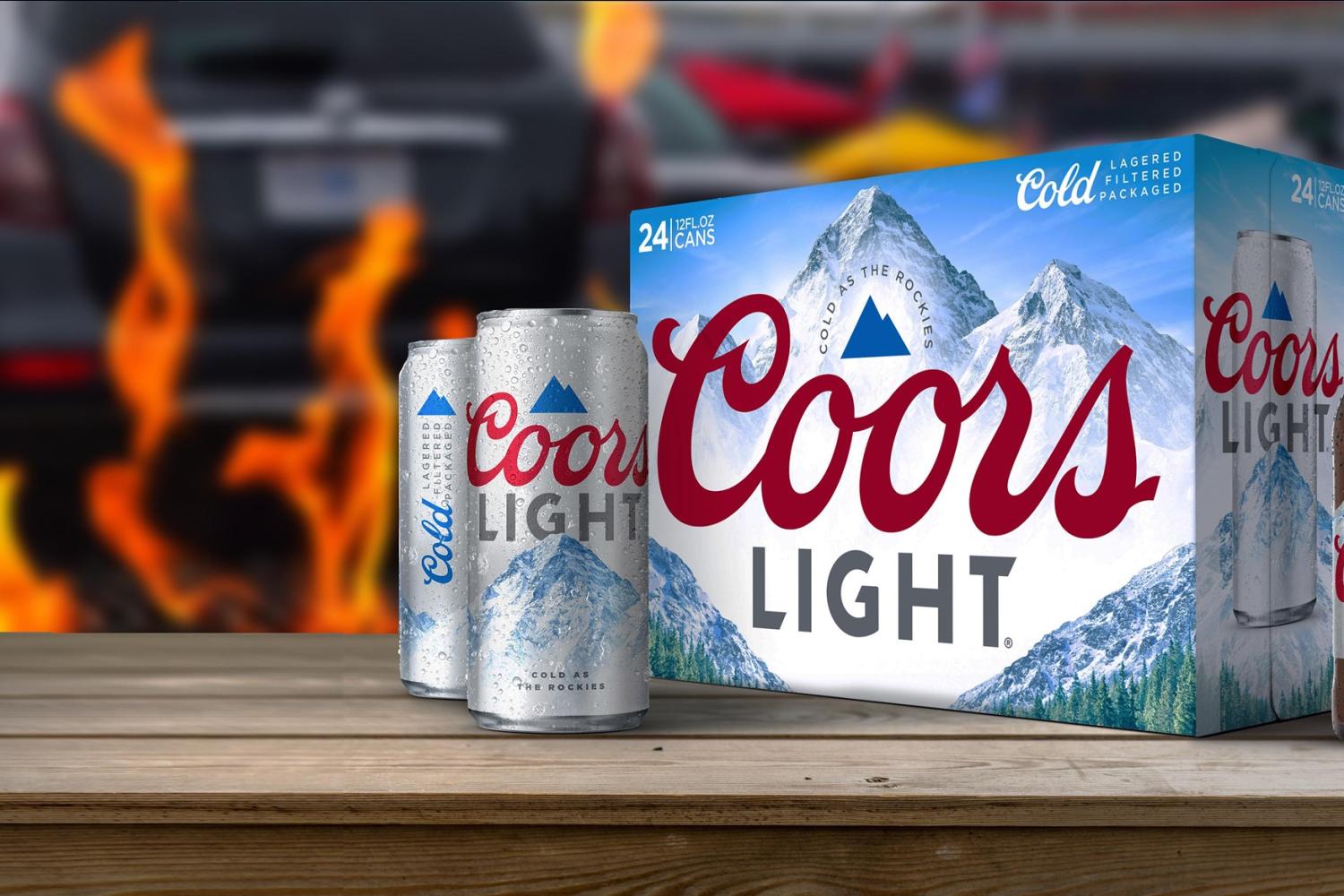
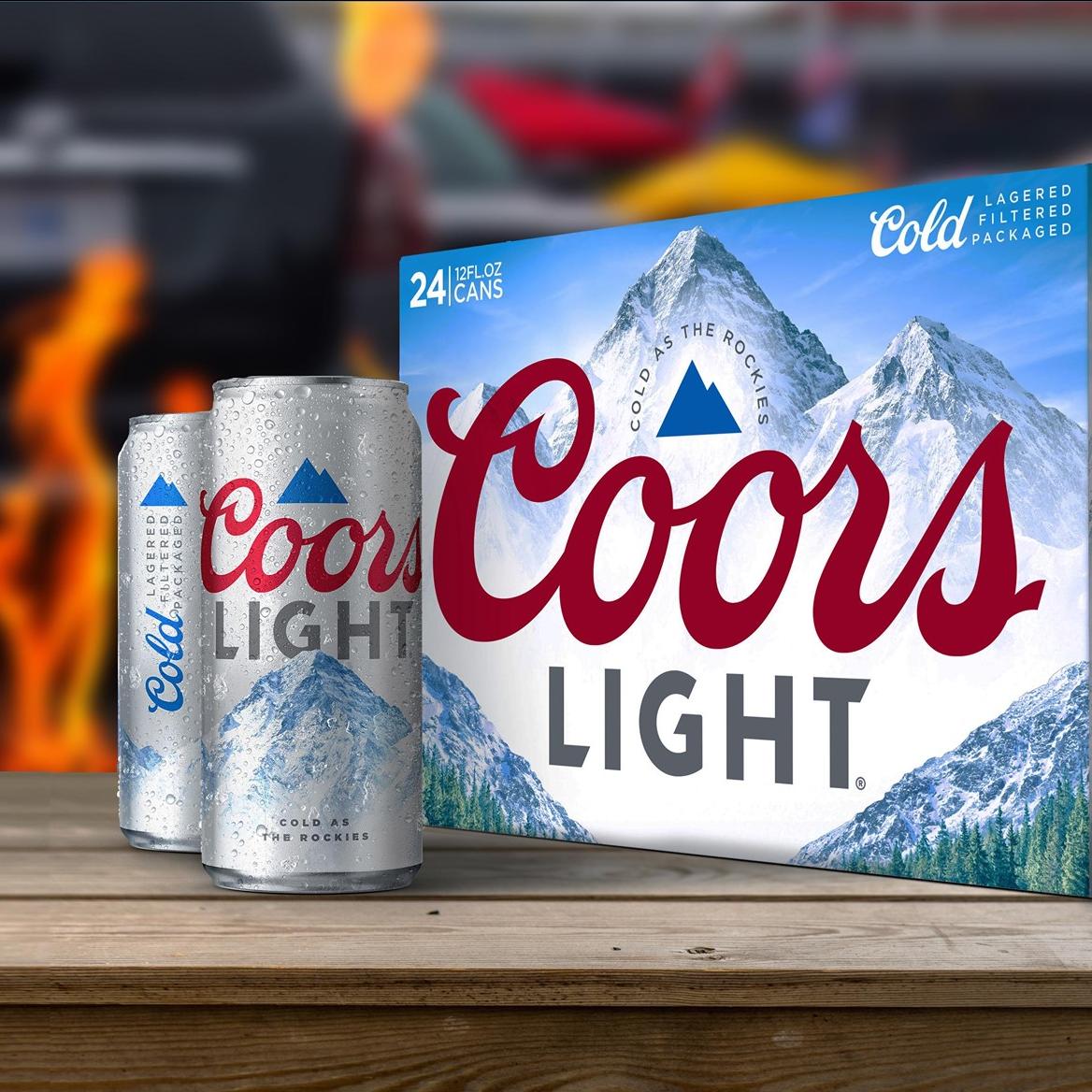
Coors Light will eliminate plastic rings from packaging globally, its parent company Molson Coors announced earlier this month.
A multimillion-dollar recycling effort from Coors Light
To support the move to more sustainable packaging, Molson Coors is investing $85 million, allowing Coors Light to transition to what the brand says is fully recyclable and sustainably sourced cardboard-wrap carriers by the end of 2022. This positions the brewer to become the largest beer brand in North America to move away from plastic rings.
Molson Coors’ investment will upgrade packaging machinery, which also allows the company’s entire North American portfolio of brands to move to cardboard wrap carriers by the end of 2025. In total, the move by Molson Coors will save 1.7 million pounds of plastic waste annually — 400,000 pounds of which will be from Coors Light packaging, the equivalent to 2500 kegs of beer, according to the brand’s sustainability website.
The new packaging debuted at the “Plastic-Free Future Mart by Coors Light,” a super sustainable pop-up concept store at 603 Manhattan Avenue in Brooklyn, N.Y., which was open from March 2 to 6. The concept store was intended to model as inspiration and a vision for a world with no single-use plastics.
“We believe that buying beer shouldn’t mean buying plastic,” said Marcelo Pascoa, a vice president of marketing for Coors. “That’s why we’re taking a step toward making packaging even more sustainable, and with this achievement Coors Light will save 400,000 pounds of single-use plastic from becoming waste every year.”
Another step in Molson Coors’ sustainability strategy
Eliminating plastic rings from Coors Light is the latest step in an sustainability effort Molson Coors announced in 2017, whose primary areas of focus are water, climate and packaging. In 2021, Molson Coors removed plastic rings across all major brands sold in the United Kingdom, including Coors and Carling, and transitioned to recyclable cardboard sleeves. Molson Coors in Canada moved to more sustainable plastic rings in 2021 as an initial step. Last year, Coors Light and Ball Corporation announced an agreement to bring the recyclable Ball Aluminum Cup to guests at Allegiant Stadium in Las Vegas.
All these measures have pushed Molson Coors closer to its goal of using packaging that is 100 reusable, recyclable or compostable, and consumer-facing plastic packaging is made from at least 30 percent recycled content by the end of 2025.
The urgency of eliminating plastic waste
The first global analysis of all plastics ever made published in 2017 in the peer-reviewed journal Science Advances underscores the urgency of eliminating plastic waste. Of the 8.3 billion metric tons of plastic produced since the mass production of plastic began more than 60 years ago, about 6.3 billion metric tons has ended up as plastic waste. Of that amount, just nine percent has been recycled; almost 80 percent of it has ended up in landfills or is now within the natural environment as litter. At some point, much of it ends up in the oceans.
Because plastic takes more than 400 years to degrade, most of it still exists in some form and just 12 percent has been incinerated. If present trends continue, by 2050, there will be 12 billion metric tons of plastic in landfills. That amount is 35,000 times as heavy as the Empire State Building, according to National Geographic.
A shift within the beer industry
The beer industry says it is becoming more sustainable, and a recent profile on Environmental Leader helps to back up such claims. Heineken aims to be a carbon-neutral producer of beer by 2030 and have a carbon-neutral supply chain, including agriculture, packaging, distribution and cooling, by 2040. The Danish beer giant Carlsberg’s Together Towards Zero sustainability strategy includes targets to halve carbon emissions at its breweries by this year. Anheuser-Busch InBev, based in Belgium, is one of the largest buyers of barley globally for its brands including Budweiser, Corona, Beck’s and Leffe. In a pilot project in Europe, it is using blockchain technology to track where the barley in every beer comes from.
Last summer, Anheuser-Busch announced a $64 million plan at its Los Angeles brewery that will include a new solar power installation in addition to the rollout of new emissions-reduction technologies. As a result, company said that the L.A. brewery will be home to the largest solar installation of any U.S. brewery, with that solar power system generating more than 10 percent of its electricity requirements.
Considering how much water is needed to brew beer, it's not surprising that investments in water technologies are becoming more commonplace. For example, as reported last fall, Anchor Brewing, the oldest brewery in San Francisco, built an on-site water treatment plant within its brewery; the company said the new system will be able to recycle as many as to 20 million gallons of water a year.
Image credit: Molson Coors via Facebook
An All-of-the-Above Approach to Feeding a 21st Century World
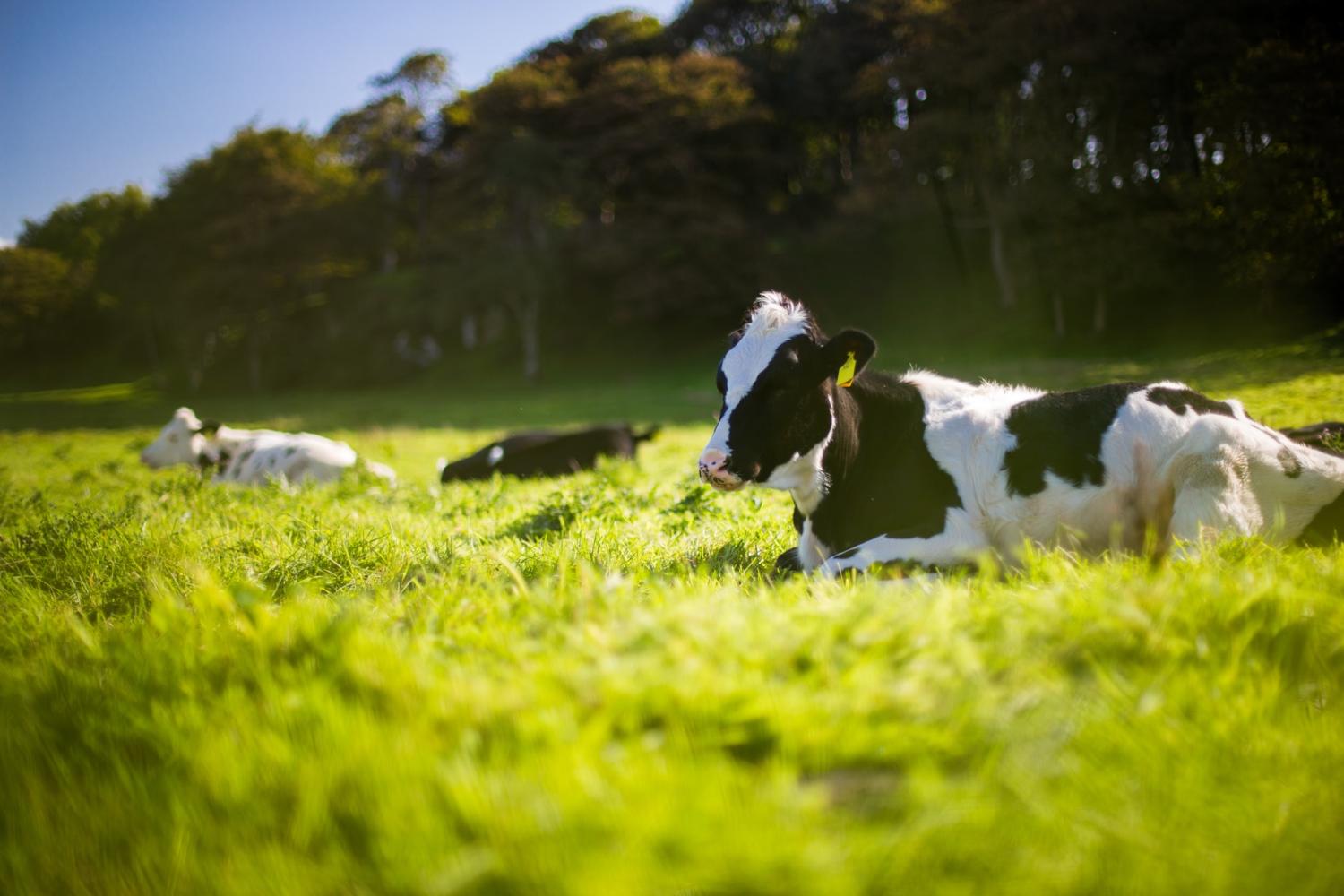

For all the advances in modern agricultural productivity, the world still faces a huge challenge if it is to feed 10 billion people by mid-century, using the same amount – if not less – available land. On that point, the Dutch health, nutrition and bioscience firm DSM has been accomplishing its part of this heavy lifting as it seeks to be a vital contributor to a more sustainable and efficient agriculture and food production sector.
From the company’s perspective, no single approach will solve the hurdles in securing a safe food supply, and DSM’s model demonstrates how an “all-of-the-above” approach is needed during the next few decades. New plans to feed the world will require transforming conventional means of animal farming and food production, the development of next-gen foods including plant-based proteins and investments in technology that can benefit both farmers and food manufacturers.
TriplePundit recently spoke with Jacobine Das Gupta-Mannak, DSM’s director of sustainability and lead nutrition, to learn more about how scientists at DSM are addressing the challenge to feed the world.
Meeting the challenges of having a key role in the food industry’s value chain
From Das Gupta’s point of view, DSM’s range of products, which includes vitamins, enzymes, supplements and premixes that go into food and feed, can work as “amplifiers” in the global food production industry’s value chain. “When additives are added to the feed of cattle and fish, you can help abate greenhouse emissions,” said Das Gupta. And among feed additives, Bovaer appear particularly efficient as “one tablespoon of our additive Bovaer can reduce a dairy cow’s methane emissions by 30 percent.”
The aquaculture industry is another example where the company says it is making headway – necessary as the global demand for protein such as fish will continue to grow at the same time more wild fisheries are becoming depleted. For example, Veramaris, a joint venture between DSM and Germany-based Evonik, produces an algae-based oil feed ingredient for farmed fish such as salmon. The resulting product contains nutrients such as the Omega-3 fatty acids necessary for the nutrition of both marine life and humans, yet vastly reduces the need to catch small oily fish such as anchovies. Every ton of algal oil produced at Veramaris’ factory in Nebraska displaces the need to catch 60 tons of wild-caught oily fish.
The role plant-based foods have in feeding people
True, global organizations such as the U.N.’s Food and Agriculture Organization (FAO) and consultancies like McKinsey have been forecasting continued growing demand for animal-based protein worldwide. Nevertheless, consumers’ demand for plant-based protein keeps growing, with one report suggesting that this niche market could reach close to $40 billion in value by 2027.
Here again, DSM has ensconced itself as a vital part within this sector’s value chain.
When it comes to plant-based foods and beverages, Das Gupta noted that “Our role is to make it nutritious, delicious and sustainable. We have enzymes that help to create the good taste and mouthfeel consumers expect, texturizing hydrocolloids for authentic bite and juiciness, along with vitamins to ensure consumers can meet their expectations on nutritional value.”
Note that key word: expectations.
When one looks at the ingredients list for a plant-based dairy alternative, the reality is that the first and foremost ingredient in them is water – more than 90 percent in many cases. The challenge, then, is to ensure that these beverages have both the consistency and nutritional profile for which consumers are searching. DSM’s product line of DelvoPlant enzymes together with its texturizers and vitamin blends help companies in this space meet such demands. As a result of using these enzymes, soy- and rice-based drinks can taste sweet, not chalky; a glass of such a beverage can be visually appealing while coming as close as possible to resembling dairy milk; and, these products also provide their share of a person’s daily requirements for vitamins and minerals.
As for a plant-based protein entrée complementing that beverage, DSM has found a product within one of the world’s most commonly grown oil seed plants. A joint venture between DSM and France-based Avril Group produces extracts from canola seeds - CanolaPRO - that manufacturers can then add to their plant-based products. The result is a sustainable, nutritionally complete source of protein that food companies seek, and at the same time, this ingredient helps provide the texture and mouthfeel that consumers expect.
Finding new ways to make animal farming more responsible and sustainable
“In general, at DSM we are agnostic about protein demand. We will need to make sure all forms of proteins will be produced, nutritious, and done so sustainably,” Das Gupta told 3p, “because when it comes to feeding the world, it’s not an ‘or,’ but an ‘and.’”
With that said, DSM is not only a health and nutrition company; like many 21st-century enterprises, it is also a technology company.
One outcome of DSM’s continued evolution is its technology platform, Sustell.
Last year, the company launched the Sustell service, which DSM describes as the first-of-its-kind intelligent sustainability platform that delivers accurate, simple and actionable solutions for farmers raising livestock. The results are a win-win all-around: an improvement in a farm’s environmental footprint, plus a support in profitability for farmers.
Partnering with DSM on this sustainable animal farming quest is Blonk, a consultancy with expertise in life cycle analysis (LCA) and the improvement of sustainability performance within the global food and agriculture sector.
DSM built the Sustell platform around Blonk’s APS-footprint tool, which monitors animal production systems while decreasing their environmental impact. Users have access to features such as an “expert center” comprised of DSM and Blonk experts in life-cycle analysis, animal nutrition and sustainability. This expert center works with animal protein producers with the goal of optimizing the environmental footprint of their farm’s production. Solutions are then customized for each individual user based on the farm’s actual data instead of general industry averages and proxy data sets.
Going a step further, the platform offers case-specific intervention scenarios, i.e., “what-if” models that can help a food producer make the best-informed and measurable improvements in sustainability performance.
The power of partnerships in the food and agriculture space
Das Gupta made it clear that for all of DSM’s scientific prowess, the company’s network of partners is also integral to the company’s growth and continued innovation. Such work with various business groups helps the company strive to accomplish whatever is possible so that DSM’s 23,000 employees can together make a significant change for the better across the world.
“All our innovation in business is directed to making progress and delivering beneficial societal impact. And, our partners help us co-create new solutions,” Das Gupta told 3p. “They bring in additional science, product development and nutrition development.”
This article series is sponsored by DSM Animal Nutrition and Health.
Image credit: Andy Kelly via Unsplash
Amid the Ukrainian Crisis, Let’s Start a Larger Conversation About Equity at Our Borders


“More than 10 buses came, and we were watching everyone leave. We thought after they took all the Ukrainians they would take us, but they told us we had to walk, that there were no more buses and told us to walk.” This is an account from Rachel Onyegbule, a Nigerian first-year medical student in Lviv, who told CNN she was left stranded at the Ukrainian border town of Shehyni. At that point, she said, she was numb from the cold and hadn’t slept in four days. What she experienced during the Ukrainian crisis mirrors that of many Africans and other people of color as they have tried to flee the war-torn nation.
The Twitter hashtag #AfricansInUkraine reveals the type of maltreatment, segregation and abuse that people of color have been experiencing at the hands of border guards. “As long as you are Black, no one likes you," Ethel Ansaeh Otto, a student from Ghana, told Sacramento’s ABC10.
An international coalition of activists and human rights attorneys has appealed the United Nations to support their call for equity from Ukraine and Poland. The coalition is requesting that state and local governments issue executive orders directing all governmental agencies to treat people of African descent and other racial minorities with humanity — including halting the use of violent means and admitting people of color at an equal rate to white counterparts as the Ukrainian crisis continues. Thus far, not much has changed at the borders.
It’s time to open up the conversation about humanity at our borders
Looking at the refugee situation unfolding in Europe, Kim Crowder isn’t necessarily surprised by the patterns of racism and brutality that people of color are experiencing and reporting. As a diversity, equity and inclusion consultant for global organizations, she told TriplePundit she’s seen similar gatekeeping in organizations — and, of course, we’ve seen similar behavior at our own southern border in the United States. Crowder noted how former U.S. President Donald Trump’s “zero tolerance” immigration policy led to thousands of children being separated from their parents.
"One of the things I always say is that what is happening out in the world is mirrored in the workplace,” Crowder said. “Because the workplace is built on social and societal norms.” In the office, Crowder has seen organizations struggle to understand the racism and discrimination that is often ingrained in their cultures. "If we think about the gatekeeping that happens when you are able to move up into the organization, it mirrors what we're seeing in Ukraine. The people who more resemble white European features come on through. And then you have access at a lower level to the rest of the folks,” she explained.
It’s perfectly normal to be shocked by the atrocities happening to refugees, but we must also understand that this sort of treatment and discrimination has been typical around the world. “And so, we need to start talking about preventative measures,” Crowder added.
Finding accountability for refugees of color during the Ukrainian crisis
In her work, Crowder said she has found that acknowledging the problem and finding accountability are keys to resolving workplace discrimination. She doesn’t imagine an international crisis would be entirely different. Dmytro Kuleba, Ukraine’s foreign minister, has acknowledged the racism on Twitter, but accountability remains unclear. The U.N. High Commissioner for Refugees has spoken about the racist treatment people of color have been facing and reassured the public that authorities have told him they will stop discriminating based on skin color and turning people away as the Ukrainian crisis continues. Still, no practical details have been shared.
Crowder noted that besides accountability, these refugees need humanity. Much of the media and many European leaders have made it clear they see white Ukrainian refugees as superior to those from Syria or Africa. Crowder brought up a headline that may seem innocuous on first view: “Thousands of African students who went to Ukraine to train to become doctors and engineers scramble to escape the Russian offensive.” She stressed the subtle danger of attaching utility to refugees of color. The question arises: Do these people deserve safety because they are doctors and engineers, or simply because they are in harm’s way?
"I think this continuous conversation around borders has to be one that we are approaching from a place of humanity,” Crowder said. Humanity seems like a good first response as the Ukrainian crisis persists.
Image credits: Matt Brown via Wiki Commons; Noah Eleazar via Unsplash
Minecraft is Promoting Peacebuilding Through Gaming


In Minecraft, gamers can help the Dalai Lama thwart conflict and promote peace within his village.
Minecraft, the world’s best-selling video game of all time, is creating digital educational experiences to inspire students so that they can help achieve peace through actions of all sizes. The video game powerhouse, through its Minecraft: Education Edition, partnered with the Nobel Peace Center and Games for Change to create “Active Citizen.” With the world trembling in uncertainty following Russia’s invasion of Ukraine, the timing for the game could hardly be better.
“We must learn at an early age that it’s possible to change the world,” said Nobel Peace Center Executive Director Kjersti Fløgstad in a video announcing the launch of Active Citizen.
Minecraft: Education Edition is leveraging its massive platform and reach for global good, creating learning adventures in a virtual, fun world. Embracing gaming technology as a tool for teaching students, who are already deeply familiar and entranced by such modalities, can yield some compelling educational results.
Gameplay centered around 4 Nobel laureates
After an introduction to inventor and chemist Alfred Nobel, the peace prizes’ grantor and namesake, the game cleverly traverses through the stories of four past Nobel laureates to learn how their bravery, compassion and persistence changed the world. Let’s take a closer look at who gamers are helping, and how:
Wangari Maathai was a Kenyan conservationist and women’s rights advocate who founded the Green Belt Movement, a grassroots initiative that has planted 51 million trees. In 2004, Maathai became the first African woman to win the Nobel Peace Prize. In this Minecraft adventure, gamers assist Maathai with her reforestation efforts (as shown below), planting trees and luring goats through the pasture to create sustainable landscapes.
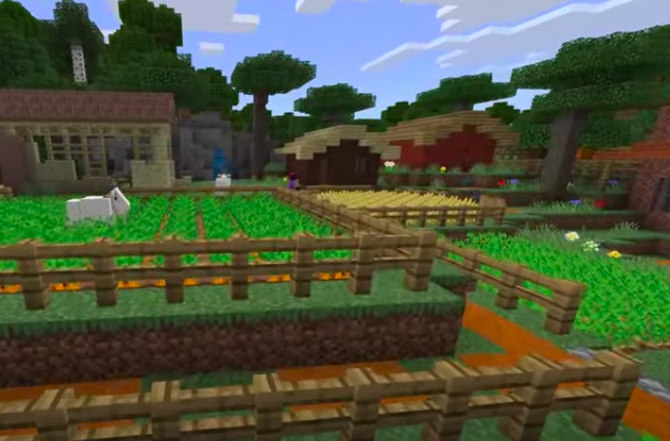
Fridtjof Nansen was a humanitarian from Norway who in the aftermath of World War I created a refugee passport system which helped stateless people gain accommodations in more than 50 countries. In Minecraft, we’re transported to a Nordic-like city where we are helping Nansen to identify displaced persons and give them a copy of their “Nansen passport.”
The 14th Dalai Lama is the highest spiritual leader and head of state of Tibet, the mountainous, Buddhist homeland. He was recognized for a Nobel Peace Prize in 1989 for promoting his nonviolent efforts for freedom and peace. In Active Citizen, we readily embrace nature by engaging with the cutest boxy animals imaginable. We then help the Dalai Lama (shown above) thwart conflict and promote peace within his village.
Malala Yousafzai, or widely known as simply Malala, is the youngest Nobel Peace Prize laureate, winning the award at just 17 years old. The young Pakistani activist became an international sensation as her suffrage for better girls’ education inspired countless people across the world. We’re transported to Malala’s village where we are trying to find segments of the journal that she secretly sent to the BBC to describe the indiscriminate education between boys and girls.
Minecraft, a tool that can now be used to envision peace
Though we’ve met the four Nobel laureates, the best part of the game is still to come. At the end of this world tour, we are sent to the Nobel Peace Center in Oslo, Norway where we are presented with a blank slate. The gamer can create a visual representation of what they believe can contribute to a more democratic society. They can pull inspiration from one of the four laureates with whom we’ve journeyed or build entirely new worlds and actions using their own life experiences.
“I would hope that young people all over the world would take inspiration from the game and from encountering Nobel Peace laureates to see that they can play a part, through their community or at the international level in making the world a better place,” said Vidar Helgesen, the Nobel Foundation’s executive director.
Image credit: Video still shot from Minecraft
Businesses Step Up Support Against Attacks on Education, Teachers and Students

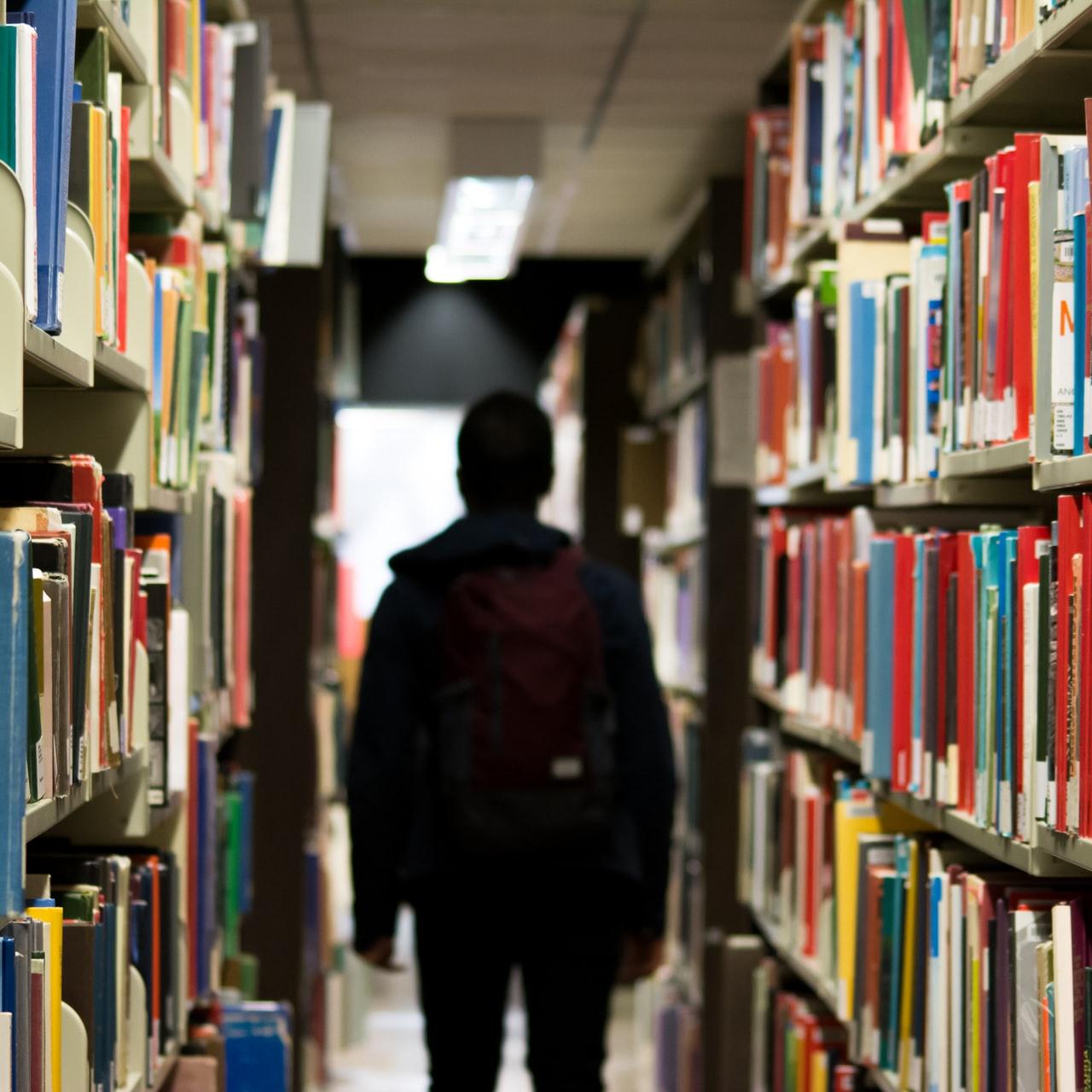
Business has long had a stake in K-12 and post-secondary education. From the school models of the industrial revolution to small businesses supporting local schools with banners on fences, companies have wanted to ensure there’s an educated workforce. Where once these organizations focused on skill sets and knowledge to benefit their particular field, more now embrace how education affects their operations and profitability on a larger societal level.
The stakes are higher now.
The floodgates of educational gag orders proposed by state legislatures and gubernatorial executive orders opened wide over the last year. Allegedly designed to prevent in-school lessons or discussions of “divisive” concepts, the initiatives gained traction as opposition to critical race theory (CRT) in schools, a much-misapplied label.
A movement to create a 'snitch culture' in education
More accurately, these legislative and executive efforts — some of which are now in effect — limit how to handle race and gender issues in schools, most notably in social studies and literature classes. However, due to the broad and vague wording of the bills and orders, teachers and school administrators feel confused and afraid as to what is permitted and what criminal penalties and fines may be imposed.
Virginia Gov. Glenn Youngkin’s imposed a tip line for parents to report teachers and schools they deem to be teaching “divisive subjects” and “behaving objectionably.” Youngkin launched the tip line by executive order on his first day in office, citing CRT as an example of a reportable offense. The Virginia governor then attempted to attach similar language to the state budget bill, but he failed. Other anti-CRT bills currently struggle in the Virginia General Assembly, but not necessarily for long.
PEN America is logging such initiatives — a whopping 128 rows of laws throughout 36 states. It shows the targets are not just K-12 public schools, but also private schools, colleges, state contractors and employers. The proposed laws include legislation that targets LGBTQ students, teachers and professors, and corporate trainers. For example, Florida’s controversial “Don’t Say Gay Bill,” which effectively bans classroom conversations about gender identity and sexual orientation, passed on Tuesday, and Gov. Ron DeSantis is likely to sign it.
Highlighting the people's history
In a variety of ways, companies are taking a stand against measures like these. On Feb. 15, the beauty brand Lush launched a campaign called Teach Truth to provide educators with resources to include the narratives of those often left out of standard social studies offerings: Black, Indigenous, People of Color (BIPOC), women, LGBTQ people and workers, among others.
The company also partnered with the education nonprofit I Dream Library, which provides books and other resources that support teachers, caregivers and students, and with educator Jesse Hagopian of the Zinn Education Project.
Lush’s website features an explanation of the reasoning behind the campaign. Further, Lush crafted a bath bomb (shaped like an open book) to be sold for a limited time with 100 percent of the purchase price (excluding tax) being donated to support educators.
More companies are pushing back against the attacks on education
In another business action, over 150 major corporations took a stand against government assaults on diversity and inclusion — especially toward LGBTQ youth and adults — in not only public K-12 schools, but also post-secondary institutions and even the training programs of companies themselves. Marriott, Hilton and American Airlines were among the flood of top-flight companies opposing anti-LGBTQ state legislation.
In their nationwide business statement, the corporations made their case to legislators that such laws conflict with not only their values statements, but also with their bottom lines. Moreover, in the statement, these entities let it be known where their clout lies in asserting their opposition to these discriminatory laws: “As we make complex decisions about where to invest and grow, these issues can influence our decisions.”
Legislative and executive attacks on the LGBTQ community, educators, schools, corporate trainers and DEI efforts are now, literally, all over the map.
As proposals become reality, companies will need to act on those strong words if they want to protect the gains they’ve realized from their inclusion programs.
And that right soon.
Image credit: Redd via Unsplash
Sustainable Snacking is on the Rise, According to a New Report


Not too long ago, a snack meant milk and cookies after school, but snacking has exploded in popularity and variety, to the point where it’s now considered a meal category of its own. With all that growth has come an increase in socially-conscious noshing, with snackers favoring foods produced and packaged responsibly and sustainably, according to the Third Annual State of Snacking Report released by Mondelēz International, one of the largest snack companies in the world.
“Consumers are growing more intentional about their purchase decisions as they become more in touch with their values,” Dirk Van de Put, CEO and chairman of Mondelēz International, wrote in the report. “They are making more of an effort to learn more about the brands or companies they buy from and becoming more discerning over the sustainable nature of the snacks they choose.”
Pandemic-induced lockdowns gave many consumers a chance to reflect on their food choices, and 80 percent of respondents to the State of Snacking report said they have become more aware of what they are buying, why they’re buying it and how it aligns with their values. How snacks are packaged has also grown in importance: 78 percent of respondents said they seek out low-waste packaging and 87 percent favor packaging that is easy to recycle.
“The findings in this report affirmed what we at Mondelēz International know to be true: Conscious consumption is increasingly top of mind for consumers, and they are becoming more intentional about their purchase decisions and aligning purchases with values,” Nick Graham, senior vice president for global insights and analytics at Mondelēz International, told TriplePundit. “Consumers are becoming more discerning over how the ingredients in their snacks are grown and the conditions under which they are produced and making choices to purchase snacks from companies with similar values.”

Consumers continue to seek out sustainable products, even amidst pandemic stress
The Mondelēz International report assesses consumer sentiment in the second year of the global pandemic — and it found that even as COVID-19 upended all aspects of daily life, consumers continued to scrutinize companies’ social responsibility commitments and production practices. Eighty-five percent of respondents said they either currently buy or are seeking to buy their snacks from companies that are committed to reducing their environmental impact, and 87 percent favor companies committed to fair labor practices.
Echoing those results, two-thirds of respondents to Trivium Packaging’s 2021 Buying Green Report labeled themselves as environmentally aware and said it was important to buy products in recyclable containers. Trivium’s report includes survey results from more than 15,000 consumers in Europe, North America and South America, and almost two-thirds (64 percent) said they put a priority on items that are packaged in recycled materials. Younger generations are more willing to spend extra money on packaging that is environmentally-friendly.
A Google Trends analysis included in the Mondelēz International report also cites environmental concerns and animal welfare as affecting shoppers' food buying choices.
How brands are responding to rising interest in sustainability
Organizations and businesses are hearing consumer preferences and addressing the urgent need to rework packaging and reduce plastic waste globally. Those efforts include the Ellen MacArthur Foundation’s Plastics Pact Network, a global group committed to developing a circular economy for plastics and "reducing the need for fossil-based plastics and other petrochemicals."
Reducing plastic waste, redesigning containers to use less plastic, and making recycling easier and more available are also among the missions of the Consumer Goods Forum, which fosters collaboration among manufacturers and retailers on a host of environmental and sustainability issues.
These efforts have drawn support from major brands and retailers like Mondelēz International, Coca-Cola, L’Oréal, Target and Walmart, which have pledged to work together to bring more sustainable packaging onto store shelves.
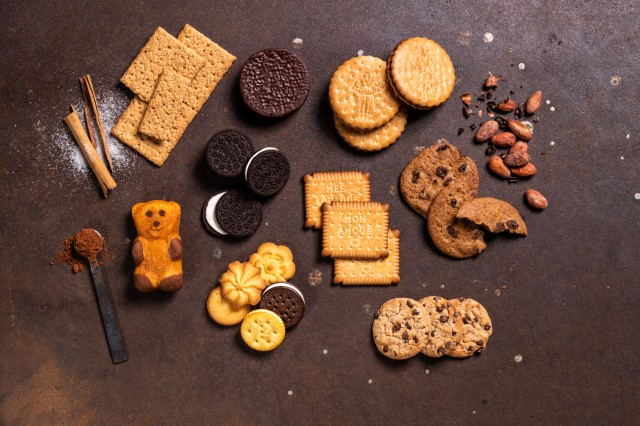
The future of sustainable snacking
The importance of packaging, production, and recyclability of snack products and containers will to continue to increase as snacking’s role in daily life grows. About 79 percent of those surveyed for the Mondelēz International report said their definition of a snack has evolved over the last three years to include “more or different types of foods, occasions for eating, or other elements.”
“Our State of Snacking report found that the definition of snacking is evolving among consumers globally, which is reshaping the meaning of snacking within people’s lives,” CEO Dirk Van de Put added in a press statement.
Part of the evolution of snacking is peoples’ growing preference for eating several small meals during the day rather than three big meals at breakfast, lunch and dinner, the report noted. Snacking is also increasingly seen as an acceptable indulgence, a way to treat oneself without going overboard on cash or calories.
“We make it a priority to constantly learn about the evolving role snacking plays in our consumers’ daily lives and rituals,” Graham told us. “The results of this report help us deliver on our purpose — to empower people to snack right and our mission at [Mondelēz International] to continue to lead the future of snacking by offering the right snack, for the right moment, made the right way.”
This article series is sponsored by Mondelēz International and produced by the TriplePundit editorial team.
Image credits: No Revisions/Unsplash and Mondelēz International